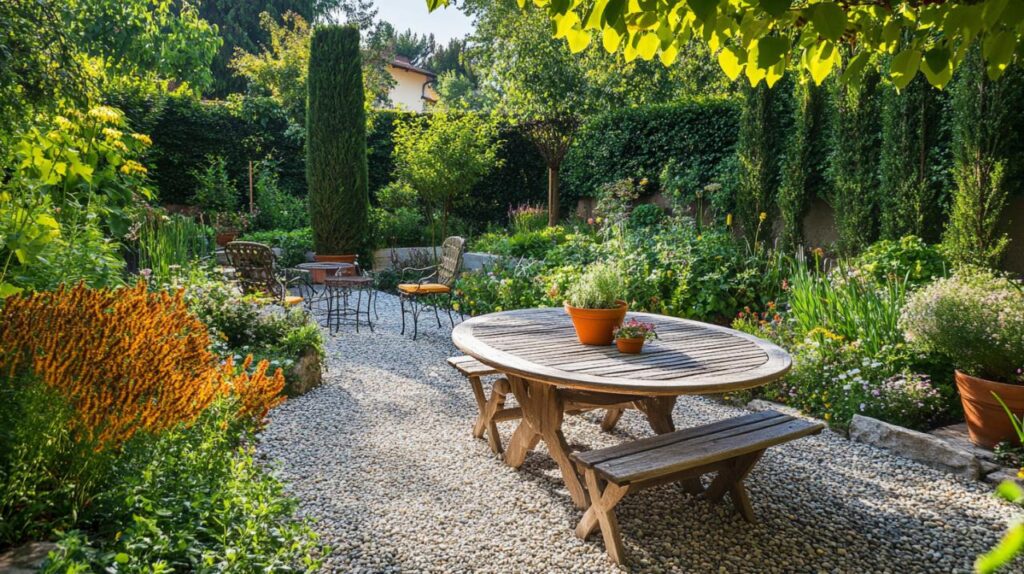When the warmer months arrive and the days stretch longer, there is nothing quite like enjoying a meal or a good book in the comfort of your own garden. Selecting the right garden table can transform your outdoor space into a welcoming retreat, whether you are hosting a lively gathering or simply savouring a quiet cup of tea. With so many options available, from classic wooden designs to modern resin finishes, understanding what works best for your needs and environment is essential. This guide will walk you through the key considerations and help you discover the perfect piece for your patio, balcony, or sprawling lawn.
Understanding your garden table requirements
Determining the Purpose of Your Garden Table
Before you begin browsing through catalogues or visiting showrooms, it is important to consider how you intend to use your garden table. The purpose of the table will influence not only its size and shape but also the material and design you choose. If you plan to host family dinners al fresco, a larger rectangular table that seats six to eight people may be ideal. On the other hand, if your outdoor space serves as a tranquil spot for a morning coffee or afternoon tea, a smaller round or square table might be more suitable. For those who entertain regularly, an extendable dining table offers flexibility, allowing you to accommodate extra guests when needed without taking up unnecessary space on quieter days. Consider whether you need a table that can be easily moved or one that will remain a permanent fixture. Folding tables are brilliant for those with limited space, as they can be tucked away when not in use. Understanding the types of garden tables available and how they align with your lifestyle will help you make an informed decision that enhances both the functionality and aesthetic of your outdoor area.
Measuring your outdoor space properly
Taking accurate measurements of your garden, patio, or balcony is a crucial step that should not be overlooked. A table that is too large can make your space feel cramped and impede movement, while one that is too small may look lost and fail to serve its purpose effectively. Start by measuring the total area where you plan to place the table, then consider the clearance space needed around it. Experts recommend leaving at least one point two metres of clearance around the table to allow chairs to be pulled out comfortably and for guests to move freely. This is particularly important if you have a rectangular table, which requires more linear space than a round or oval design. For medium-sized patios, round or oval tables seating four to six people are often the best fit, as they encourage conversation and make efficient use of space. In smaller balconies or compact courtyards, a square table or a foldable design can provide the seating capacity you need without overwhelming the area. By carefully measuring and planning, you ensure that your garden table complements your space rather than dominating it.
Exploring garden table materials and their benefits

Comparing wooden, metal, and resin garden tables
The material of your garden table plays a significant role in its durability, appearance, and maintenance requirements. Wooden tables, particularly those crafted from teak or acacia wood, offer timeless elegance and a warm, natural aesthetic that blends beautifully with greenery. Teak is renowned for its weather-resistant properties, making it a popular choice for outdoor furniture, though it does require regular maintenance such as sealing and oiling to preserve its finish. Acacia wood is another excellent option, providing both warmth and strength at a more accessible price point. A typical acacia table measuring one hundred and twenty centimetres by seventy centimetres by seventy-four centimetres can be found for around one hundred and ten pounds, offering great value for those seeking a natural look. Metal tables, including those made from aluminium, wrought iron, and powder-coated steel, are prized for their modern appearance and robust construction. Aluminium tables are lightweight and rust-resistant, making them easy to move and maintain. They often feature sleek, contemporary designs that suit urban patios and modern gardens. An example is the Málaga Clásica table, which costs approximately one hundred pounds and combines durability with style. Wrought iron offers a more traditional aesthetic and is exceptionally sturdy, though it requires rust protection to withstand the unpredictable British weather. Resin and synthetic rattan tables have gained popularity in recent years due to their low maintenance and weather-resistant qualities. The Ouvéa table, with a diameter of one hundred and thirty-nine centimetres, is available for about one hundred pounds and exemplifies the modern design and easy upkeep that resin wicker offers. These tables are lightweight, comfortable, and moisture-resistant, making them ideal for families and those who prefer a hassle-free option. Glass-top tables add a touch of sophistication and are best suited for covered areas where they are protected from the elements, as they can be more fragile than other materials. Each material has its own set of advantages, and your choice should reflect both your aesthetic preferences and the practical demands of your outdoor environment.
Maintenance requirements for different table materials
Understanding the maintenance needs of different materials is essential to ensuring your garden table remains in excellent condition year after year. Wooden tables, while beautiful and durable, demand regular care to prevent weathering and preserve their natural lustre. This includes cleaning with a teak cleaner and protector kit, applying a hardwood shield, and covering or storing the table in a dry location during harsh weather. In spring, inspect your wooden furniture for any signs of damage, perform a deep clean, and apply protective coatings as needed. During the summer months, a light cleaning and occasional pest control will keep your table looking its best. As autumn approaches, secure and cover your furniture to protect it from the elements, and in winter, storing the table indoors or under a breathable furniture cover will prevent frost damage. Metal tables, whether constructed from aluminium, wrought iron, or powder-coated steel, are generally easy to maintain but require regular cleaning with soapy water and occasional checks for rust, particularly if the protective coating has been scratched. Storing metal furniture in extreme weather or using a breathable cover can extend its lifespan significantly. Resin and synthetic rattan tables are among the easiest to care for, needing only a wipe-down with soap and water to remove dirt and debris. Their woven texture can make thorough cleaning a bit more time-consuming, but a fabric and upholstery cleaner can help. It is advisable to store or cover these tables in winter to prevent any long-term exposure to frost. Outdoor fabric cushions and accessories should also be maintained with a fabric care kit and stored or covered during bad weather to prevent mildew and fading. Polypropylene tables are functional and economical, often costing around fifty pounds, and require minimal upkeep, making them a practical choice for those seeking a low-maintenance solution. By following these seasonal care tips and understanding the specific needs of your chosen material, you can enjoy your garden table for many years to come, regardless of the unpredictable British weather.

